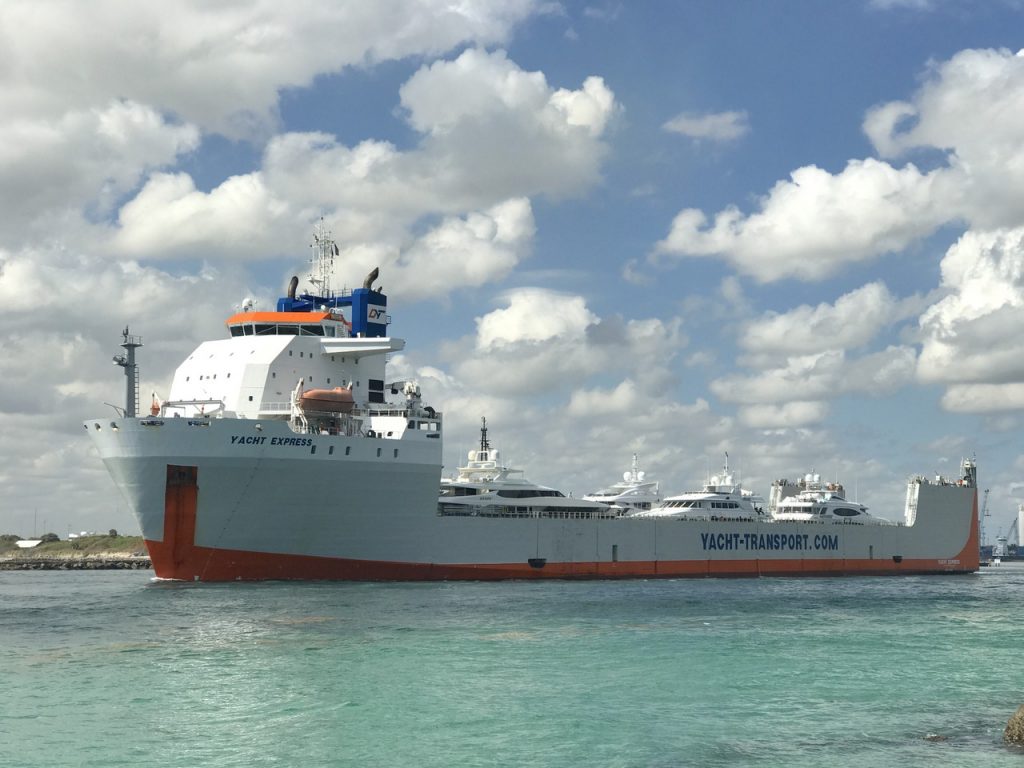From our anonymous insider…
Goodbye gastrointestinal system; hello renal system. I was only two-thirds of the way through the GI textbook chapter.
Lectures introduced how the kidneys regulate body fluid “compartments.” The body contains about 42 liters of water: 28 liters intracellular (within cell membranes) and 14 liters extracellular (outside cell membranes). The extracellular fluid includes 11 liters of interstitial fluid (between cells) and 3 liters of blood plasma. These compartments are constantly changing their equilibrium with excretion of urine and intake of food with varying osmolarities (concentration of solution). Western diets high in salt increase the osmolarity of blood, causing a net increase in blood volume and increase in blood pressure for a given vascular tone, also known as volume-loading hypertension.
In Anatomy we continued dissection of the abdomen, removing the liver, spleen and kidneys. Liver removal required five scalpel cuts, each of which took about five minutes to prevent damage to surrounding tissue. The liver is anchored in the body by several strong ligaments: hepatogastric, hepatoduodenal, hepatodiaphragmatic and falciform. The falciform ligament connects the liver to the anterior abdominal wall including the belly button. Ligamentum teres, the remnant of the umbilical vein, runs through the falciform.
There are five regular Anatomy instructors, three of whom are surgeons and two are veterinary anatomists(!). However, our school also brings in three or four working surgeons. This week my favorite trauma surgeon noted how in some conditions the umbilical vein remnant can reopen! Two groups were scolded for ripping the hepatoduodenal ligament without dissecting the portal triad (portal vein, common bile duct and hepatic artery). Our cadaver had no gallbladder, so we worked with other groups to understand that region.
Next we removed the kidneys, slicing each into anterior and posterior sections. Most kidneys had large renal cysts, one the size of a golf ball embedded in the cortex (outer region), and some included stones ranging in size from sand grains that one could feel up to two centimeters in diameter.
Every day we bombard our body with a variety of food and water with different concentrations. It is up to our kidneys, the interface between the vascular system and the urinary tract, to maintain electrolyte and volume homeostasis (equilibrium).The urinary tract is a continuous, branching tubular network that extends from the urethra to the bladder to each kidney’s ureter. The ureter branches into microscopic collecting ducts. Each collecting duct connects to hundreds of nephrons (specialized tubule segment). The nephron tubule segment ends at Bowman’s capsule, a spherical bulge in the tubule and the glomerulus (specialized capillary network). Each kidney has about 1-1.5 million nephrons.
It is here at the glomerulus that blood plasma spills into the tubule system becoming filtrate. Under normal physiological conditions, the kidneys receive 20 percent of the cardiac output. Every day 180 liters of plasma is filtered by the tubule system. However, normal urine output is about 1.5 liters per day. That is an immense amount of reabsorption of solutes and water!
The glomerulus is the first step in deciding what becomes urine. The glomerulus supports the beautiful “foot processes” of podocytes, amazingly specialized epithelial cells (see the details in this Nature article). During kidney development, the distal (far) end of the nephron tubule, which becomes Bowman’s capsule, is penetrated by blood vessels, which become the glomerular capillaries. The glomerular endothelial cells begin to loosen their connection with each other to form fenestrated (“fenetre” meaning windows) capillaries. The tubule epithelial cells interacting with the capillary endothelial cells become these specialized podocytes. The cell body of a podocyte sends thousands of “foot processes” to wrap around the capillary cylinder. Proteins on the podocytes’ cell membrane bring these foot processes together to create slit diaphragms, the final filter pore of 10-20 nanometers in diameter. For blood plasma to reach the urinary tract, it traverses through the fenestrated glomerular capillaries, a dense extracellular basement membrane and and the podocytes’ slit diaphragms. This multi-layered biological nanofilter filter prevents large particles and negatively charged proteins from entering the tubule.
The plasma that is filtered becomes filtrate. Unlike the epithelial cells of the more distal urinary tract, the epithelial cells of the nephron are highly specialized in transport processes. Along the way the epithelial cells of the tubule reabsorb filtered solutes (e.g, sodium, glucose and amino acids), secrete waste products (e.g., protons and urea) and determine how much water should be reclaimed back into the vascular system. The kidney is under sensitive hormonal and nervous control to regulate plasma osmolarity and plasma volume. If blood volume decreases, baroreceptors in the carotid bodies signal the kidney to increase isosmotic absorption via aldosterone. If blood osmolarity is too high, the hypothalamus (part of the brain) signals the pituitary gland to release Antidiuretic Hormone thereby increasing free water reabsorption (urine concentration).
Sound complicated and failure-prone? It is. Most hypertension and other nominally vascular disorders start with dysregulation or degradation of the kidney. Our nephrologist professor: “The kidney allows terrestrial life.”
Our patient case: “James,” an 18-year-old freshman at the local community college. James presented to his primary care physician with fatigue, general weakness, and hepatosplenomegaly (enlarged spleen and liver). Lab tests revealed a low platelet and white blood cell count. He was prescribed antibiotics and referred to a hematologist: earliest appointment in two weeks.
His symptoms worsened with swelling in his feet and periorbital (around the eye) region. His mother took him to the ED, where a physician, suspecting a reaction to the antibiotics, swapped the antibiotics for an antihistamine to combat the inflammation. At the appointment the next day, the hematologist suspected mononucleosis (the kissing disease “Mono”) but the test came back negative. He was referred to a nephrologist: earliest appointment in three weeks.
“The appointment made me put the symptoms to the back of my mind. I would deal with it at the appointment.” James gained twenty pounds in water weight with swelling extending to his lower extremity and scrotum. The nephrologist ran tests that showed extremely low albumin levels in his blood plasma. Albumin is the most abundant plasma protein. Without this oncotic (protein solute) pressure, there was a net movement of water out of James’s plasma into the interstitial fluid. Why was his albumin so low? The nephrologist said, “You are either peeing out an unbelievable amount of albumin, or your liver is not able to produce it.” He suspected Hepatitis C or HIV.
What would peeing gobs of albumin out look like? The nephrologist told James that it would look like frothy urine: “Imagine whisking egg whites with water.” James responded, “I always thought frothy urine was normal. It’s all I have known.” He was sent straight to the ED.
James’s kidneys were shutting down. While in the hospital, blood pressure spiked from 150/90 to 250/150. Doctors thought he might not make it. He underwent plasmapheresis (filtering of plasma through a machine) and plasma transfusions for two straight days. “I was really drugged up but I do remember seeing my blood being pumped through these tubes out of my body. That was the first time I was scared.”
James stayed in the hospital for nine days. “I did not sleep for two days straight. Every two hours a nurse would come in to check my blood pressure and take blood.” He was most frustrated that he was not allowed to shave or shower: “My platelet count was so low they thought I might bleed to death if I cut myself.” A kidney biopsy revealed inflammatory vascular deposits in his glomerular capillaries. He was diagnosed with Systemic Lupus Erythematosus, an autoimmune disease that causes destruction of various organs including the kidneys. He was put on short-term immune suppressors and glucocorticoids, which are anti-immune steroid hormones.
James’s recovery was long and painful. He had 45 lbs of excess water weight. He would urinate clear fluid every 30 minutes. Water seeped out of a cut on his left leg. Three months after discharge he resumed classes. “I wrapped a washcloth around the cut to soak up the water that still seeped out.” My legs were so swollen I could not bend them to walk up stairs. The severity of his disease did not hit him until after the critical episode.
The mother was thankful for his post-diagnosis medical care, but angry about the three-week wait between the hematologist and nephrologist. James’s nephrologist said that if the appointment had been even one day later, James would have not recovered normal kidney function, if he even survived the severe electrolyte imbalance and hypertension.
James is now considered cured, though he remains on immune suppressors. His kidney function has returned to normal. James hopes to become a biochemist developing new drugs.
Later that day, the head of the ED introduced emergency medicine, the art of triaging undifferentiated patients and sending diagnosed patients to specialists for care. Straight out of a three-year residency, EM physicians make an average salary of more than $310,000. Salaries at academic institutions are lower, while salaries tend to be higher for more rural institutions. EM physicians work 30-32 hours a week with regular shifts. “Once I am off, I am off. I don’t carry a pager. I do not have any patients once I am off my shift.” A more rural and less busy ED will have 12- or 24-hour shifts; a busy urban ED will have 8-10 hour shifts. He loves going rock-climbing and skiing on weekdays: “The slopes are clear at 11:00 am on a Tuesday. Internists and surgeons claim they have hobbies, but if you ask them how long it has been since they did that activity, it is usually months. Ask an EM physician and the answer is ‘Last week’.”
The physician said that emergency medicine is the youngest speciality. In the 1940s, a critically ill patient would be brought to the family physician. Formal recognition of emergency medicine as a specialty came in the early 1970s.
Any downsides to the specialty? “Other specialists have no respect for EM physicians. We are a jack-of-all-trades, master of none.” EM physicians are required by federal law to see all patients. “We do not get to pick our patients.” EM physicians also get no appreciation from patients. “The patient sends the fruit basket to his cardiologist after a heart attack, even though it was the EM physician that saved his life. Instead, we get lawsuits. Patients don’t sue their internist they have been seeing for a decade when their condition deteriorates into a heart attack. They sue the ED.”
Our school’s full-time chief diversity officer, a Ph.D. in psychology, hosted a lunchtime diversity discussion with catered Indian and Thai food. Sadly I was forced to miss this event due to shadowing a physician in the hospital. Classmates said the main topic was diversity in the classroom. Fortunately this was not my last chance. The chief diversity officer’s assistant sent an email this week inviting students to a self-defense class:
Students who identify as female: Learn maneuvers to help you evade uncomfortable and/or dangerous situations. … Students who identify as male: Learn tips on how to engage in a situation and diffuse it without escalating it.
Statistics for the week… Study: 15 hours. Sleep: 8 hours/night; Fun: 1 night. Example fun: Medical school formal, also known as “MedProm” at a downtown ballroom. The medical school deans and instructors left around 10:00 pm, perhaps because the social chairs hired a DJ specializing in electronica and hip-hop. We danced to Lil Jon’s “Get Low” and the pop hit “Closer“. One of my favorite classmates and his wife brought hip flasks of liquor to spice up the cash bar concoctions.
More: http://fifthchance.com/MedicalSchool2020
Full post, including comments 


